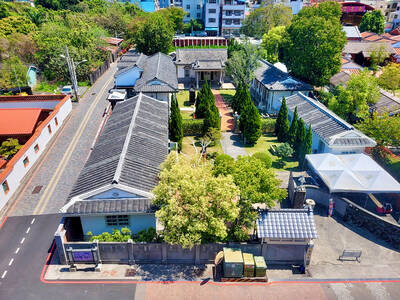In 1941, with its back against the wall, Britain was ready to try just about anything to avoid defeat at the hands of Nazi Germany. And so it happened that, to her surprise, a 33-year-old woman named c was recruited by a top-secret agency, the Special Operations Executive, where she ended up overseeing a network of British spies operating in France. Like many of the people around her, Vera Atkins was an amateur. Unlike them, she hid a past so mysterious that it took decades to unravel. Her extraordinary life, pieced together in a stupendous job of reporting by the British journalist Sarah Helm, is the subject of A Life in Secrets.
Helm, a longtime reporter for The Sunday Times of London and The Independent, met her subject only once, in 1998, but that was enough. Nearing 90, Atkins, who died in 2000, remained an intimidating figure, a heavy smoker with a chilly, even haughty demeanor, a precise upper-class accent and a remarkable ability to summon up certain historical details and evade others.
This was recognizably the striking, self-possessed woman described by the Nazi spy catcher Hugo Bleicher, who was interrogated by Atkins just after the war. “She turned out to have more aplomb than all the other officers put together,” he wrote in his memoirs. “She boxed me in with astonishing ease and consummate tactics.” As one of her colleagues put it, “she had a very manly brain.”

Atkins, by the time she caught up with Bleicher, was a woman on a mission. Of the 400 agents sent to France by F Section, the French division of the Special Operations Executive, more than a hundred were still missing three months after D-Day, and Atkins, who had personally seen many of them off from airfields in Britain, was determined to learn their fate. For the next several years, she would crisscross France and Germany to get answers. Of special concern to her were the 12 women she had sent over as couriers and wireless operators, above all the gentle, almost childlike Noor Inayat Khan, a 29-year-old of Indian descent who volunteered for hazardous duty but declared herself incapable of lying.
Helm describes the workings of F Section in fascinating detail, including the fact that in 1943 it was betrayed by a French pilot, who flew agents from Britain to France. As a result, many of its operatives walked directly into the waiting arms of the Nazis, who took their radios and began requesting more agents, money and arms, which F Section duly sent.
The history of F Section, and the Special Operations Executive, blends heroism and ineptitude, with top honors for incompetence going to Atkins' superior, Maurice Buckmaster. A genial bumbler, Buckmaster refused to believe that his operations had gone awry until the Germans, on orders from Hitler, sent taunting messages thanking F Section for the cash and the guns.
Atkins was a cipher to her colleagues and remained one for most of her life. To uncover the truth, Helm traveled thousands of kilometers, from Romania to Canada, to pore over documents and photographs in family records, photo albums and state archives. Detail by detail, she squeezed the story out of surviving relatives and wartime colleagues.
Some readers will find this tedious and overly scrupulous. Helm turns over every last stone. For long stretches, her reporting becomes the story. And F Section was, after all, a small cog in the British war machine. Yet her obsessions and those of her subject mesh in a compelling way. The long trek across war-ravaged Germany and France in search of Atkins and her spies yields enough material to generate a dozen Len Deighton novels.
Atkins, despite her posh English accent and her adoration of all things upper class and British, was a Romanian Jew with the family name Rosenberg. The family, with roots in Germany, South Africa and Britain, ran a successful timber business. Vera grew up speaking multiple languages and attended finishing school in Switzerland.
Helms discovered that Atkins probably began supplying information to British intelligence while working as a secretary for an oil company in Bucharest. After making her way to Britain in 1937, she was recruited for F Section, an ideal candidate, considering her fluent French and German.
In other ways, she was less than ideal. As a Jew, she encountered prejudice from the sort of upper-class Englishmen she so admired. More seriously, and unknown to anyone until Helm unearthed the facts, she had secretly traveled to Antwerp in 1940 to pay US$150,000 to a Nazi intelligence agent to secure a passport for a family member, who agreed in return to supply intelligence to the Nazis.
The search for the missing agents provides Helm with her most gripping pages, as Atkins, racing against time, tracks down and interrogates Nazi officers, prison-camp workers and former prisoners. Some of the missing returned. Brian Stonehouse, a Jewish agent, miraculously survived four concentration camps. Odette Sansom, a courier, survived Ravensbrueck by pretending to be the wife of her spy partner, who happened to be named Churchill. This ruse earned her special consideration, although her Churchill was no relation to the prime minister.
Most of the female agents were sent on doomed missions that led them, eventually, to concentration camps and execution. Noor Khan, considered emotionally frail, turned out to be fierce and courageous when captured. She refused to cooperate with the Germans, showed them nothing but contempt, and in the instant before her death, after she had been tortured and beaten to a bloody pulp, spoke but a single French word, liberte.
Atkins may have been too secretive for her own good. In later years she was suspected of being either a German or a Soviet spy. One former colleague, writing to her in the 1960s, faulted her for being discreet, “so discreet indeed as to seem mysterious, if you are not mysterious.”
She was mysterious, with a lot to be mysterious about. Helm, to her great credit, digs to the very bottom of it and lays it out for the world to see.

April 28 to May 4 During the Japanese colonial era, a city’s “first” high school typically served Japanese students, while Taiwanese attended the “second” high school. Only in Taichung was this reversed. That’s because when Taichung First High School opened its doors on May 1, 1915 to serve Taiwanese students who were previously barred from secondary education, it was the only high school in town. Former principal Hideo Azukisawa threatened to quit when the government in 1922 attempted to transfer the “first” designation to a new local high school for Japanese students, leading to this unusual situation. Prior to the Taichung First

Chinese Nationalist Party (KMT) Chairman Eric Chu (朱立倫) hatched a bold plan to charge forward and seize the initiative when he held a protest in front of the Taipei City Prosecutors’ Office. Though risky, because illegal, its success would help tackle at least six problems facing both himself and the KMT. What he did not see coming was Taipei Mayor Chiang Wan-an (將萬安) tripping him up out of the gate. In spite of Chu being the most consequential and successful KMT chairman since the early 2010s — arguably saving the party from financial ruin and restoring its electoral viability —

The Ministry of Education last month proposed a nationwide ban on mobile devices in schools, aiming to curb concerns over student phone addiction. Under the revised regulation, which will take effect in August, teachers and schools will be required to collect mobile devices — including phones, laptops and wearables devices — for safekeeping during school hours, unless they are being used for educational purposes. For Chang Fong-ching (張鳳琴), the ban will have a positive impact. “It’s a good move,” says the professor in the department of

Toward the outside edge of Taichung City, in Wufeng District (霧峰去), sits a sprawling collection of single-story buildings with tiled roofs belonging to the Wufeng Lin (霧峰林家) family, who rose to prominence through success in military, commercial, and artistic endeavors in the 19th century. Most of these buildings have brick walls and tiled roofs in the traditional reddish-brown color, but in the middle is one incongruous property with bright white walls and a black tiled roof: Yipu Garden (頤圃). Purists may scoff at the Japanese-style exterior and its radical departure from the Fujianese architectural style of the surrounding buildings. However, the property